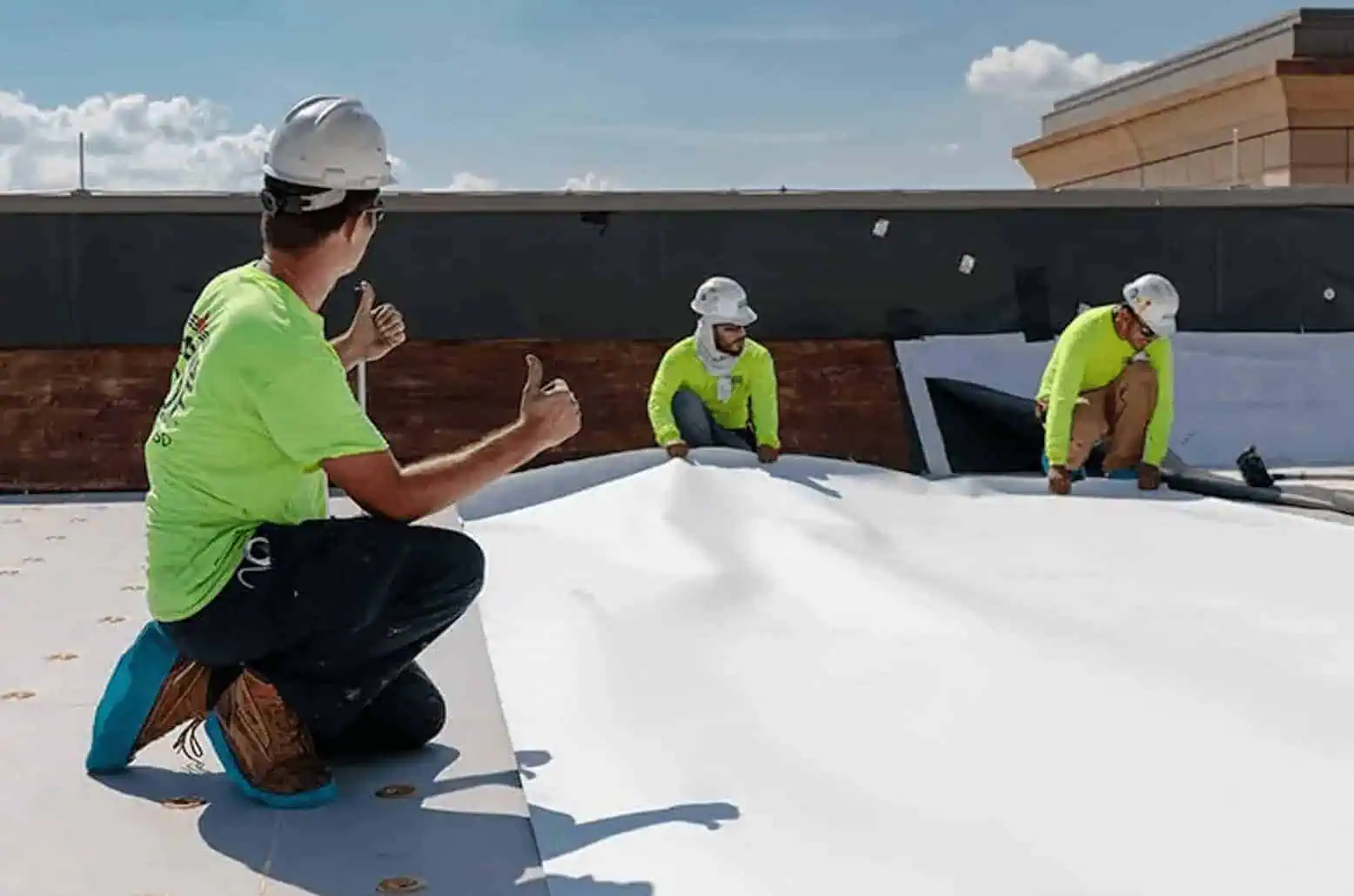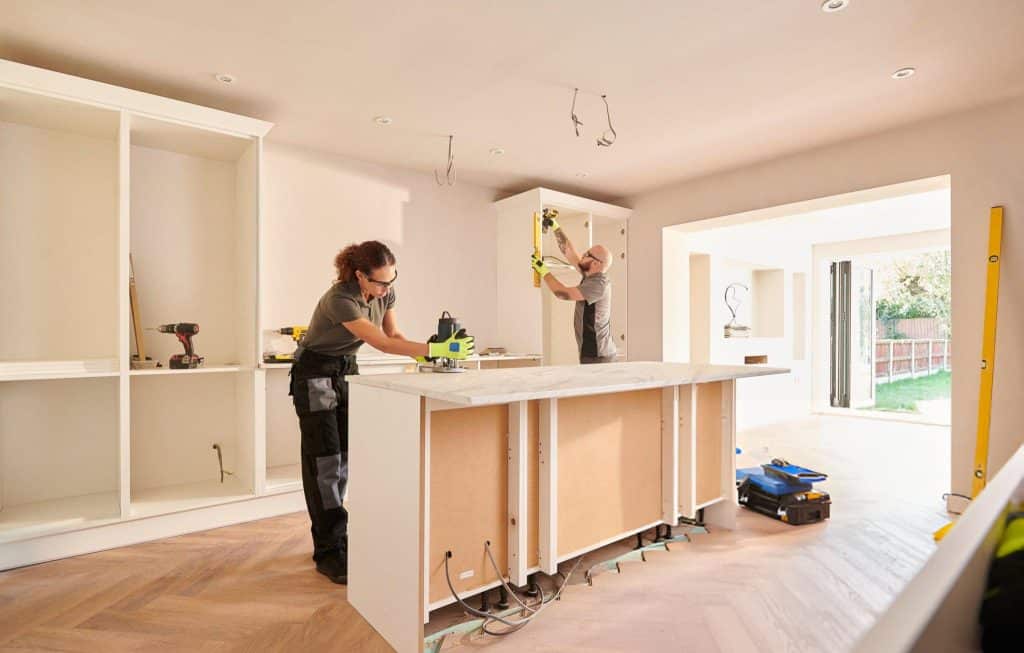Thinking about redoing your roof? Or maybe starting fresh with a brand-new build? Either way, if you’ve come across the term TPO roofing, you’re probably wondering what it actually means and why everyone in the roofing world seems to be buzzing about it. Well, you’re in the right place. TPO (Thermoplastic Polyolefin) has become one of the most popular roofing systems out there, especially for flat or low-slope roofs. It’s sleek, durable, cost-effective, and known for reflecting heat, making it a favorite for both residential homes and commercial buildings that want long-term performance without constant maintenance. But what exactly is a TPO roof made of? How does it compare to other materials like EPDM or PVC? And is it really worth the investment?
Let’s break it down.
What Is TPO Roofing?
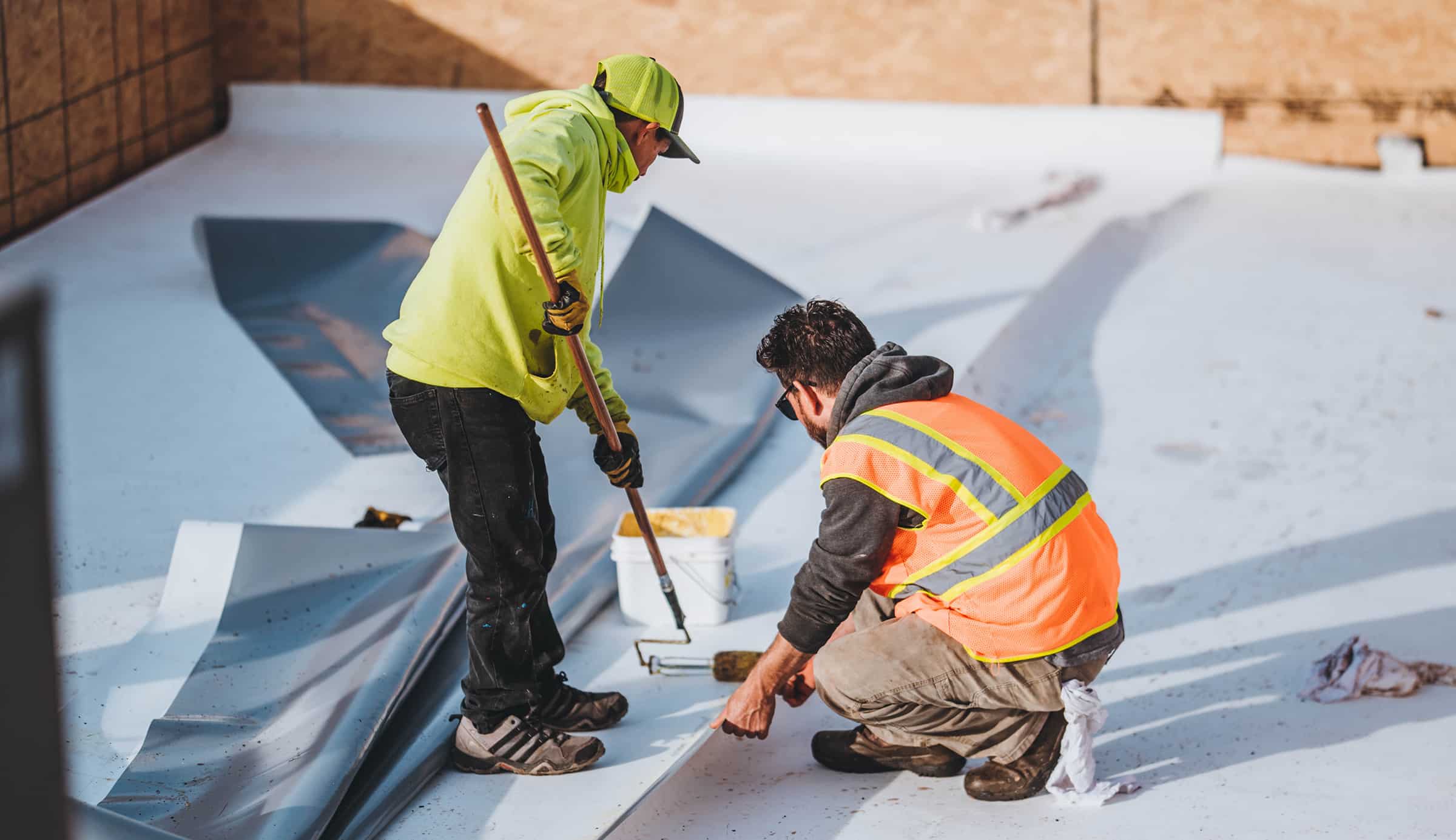
Credit: christianbrothersroofingllc.com
So, let’s start by breaking down the basic meaning: What is TPO? TPO stands for Thermoplastic Polyolefin, a term referring to a type of single-ply roofing membrane commonly used on flat roofs. The TPO meaning in roofing simply refers to this blend of ethylene propylene rubber and other materials that make it durable, reflective, and affordable.
Let’s simplify what a TPO membrane really is:
- It is basically a flexible TPO accessory system designed to cover flat roof structures.
- TPO roofing reflects UV rays, helping with long-term energy savings.
- Well, it’s often used in commercial fire resistance projects due to its safety.
- It competes with other systems like EPDM roofing and PVC roofing.
What Makes TPO Roofing So Popular?
Maybe you are wondering why everyone keeps talking about TPO. Here’s why TPO roofing is such a hit across the U.S.:
- It’s cost-effective, lightweight, and easier to install than most roofing types.
- The white surface reflects sunlight, which makes it an energy-efficient roofing material.
- It holds up well to hail, wind, and rain.
Wondering, “Where can I find reliable TPO roofing near me?”
General Construction & Remodeling offers professional installation of TPO roofing, roof repairs, and roof replacements all across Rhode Island. So, get in touch with us now.
TPO Roof Installation Guide (Step-by-Step)
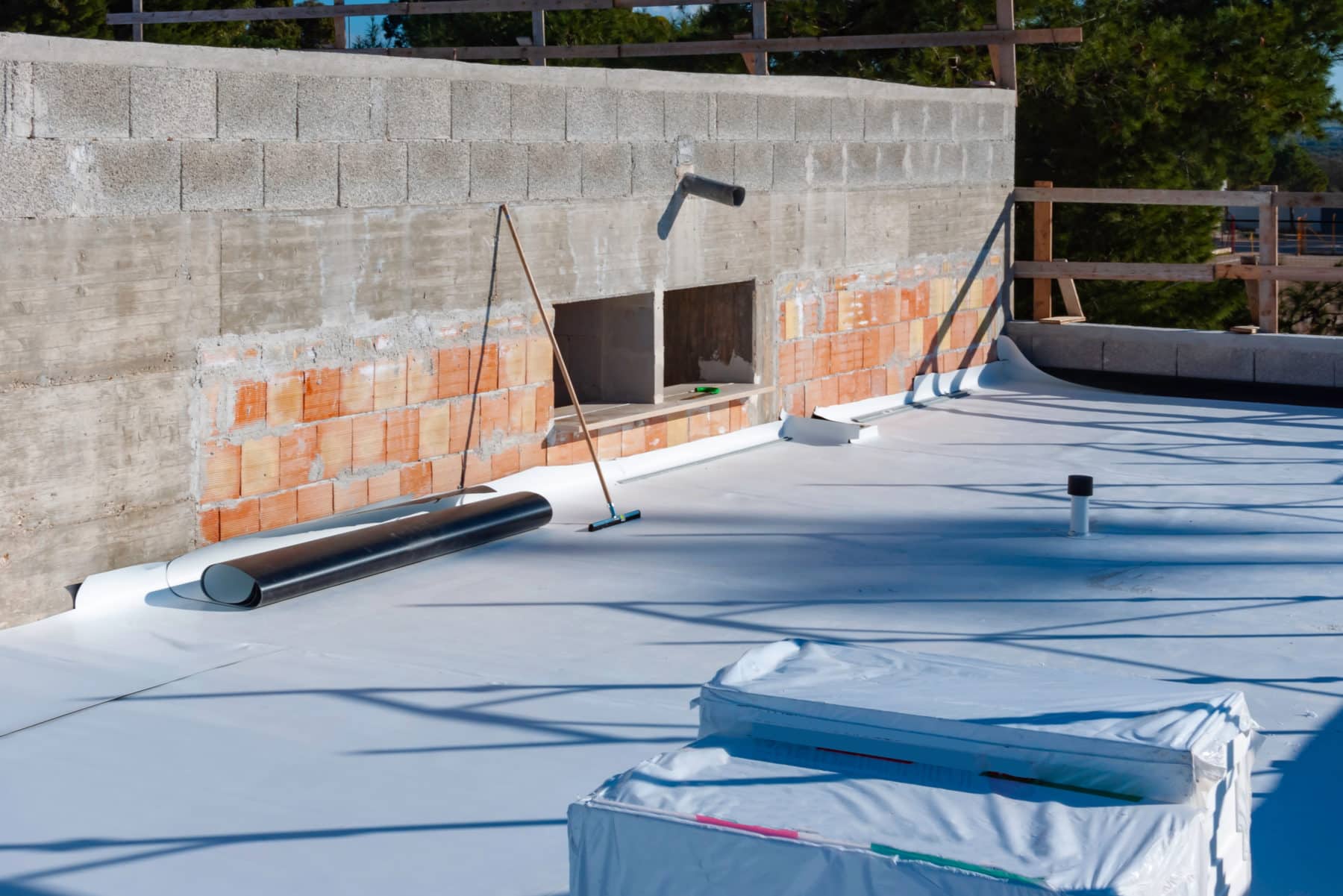
Credit: premanroofing.com
Now, we’ll look at a typical TPO installation process in detail, and by the end of this guide, you’ll be more familiar with the steps.
Prep the surface
The first step is to prepare the surface. All old roofing material is to be removed. The base is cleaned and inspected for any roof damage or leaks.
Add insulation
After that, foam or boards are added to improve efficiency; this also helps the TPO membrane sit smoothly and flat on the surface.
Lay the membrane
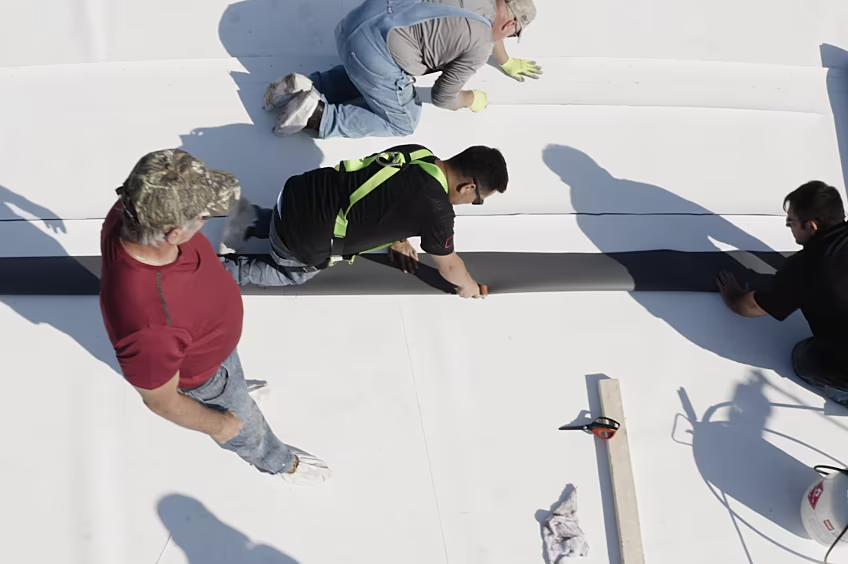
Credit: gaf.com
Well, now, wide sheets of single-ply membrane are rolled out and aligned across the flat roof.
Secure the material
Now, you have to secure the roofing material so it doesn’t come off. The TPO roofing is either mechanically attached or fully adhered using glue or ballast.
Heat-weld the seams
Using special tools, the seams are welded shut to make the roof watertight.
Seal the edges
Flashings, vents, and corners are sealed to prevent leaks or hail damage.
Need help with TPO roofing installation? Get peace of mind with certified pros from General Construction RI. We handle everything from setup to final inspection.
TPO Roofing Costs
How much does this type of roofing system cost? Let me tell you that it’s generally more affordable than PVC and more modern than asphalt shingles or EPDM roofing systems.
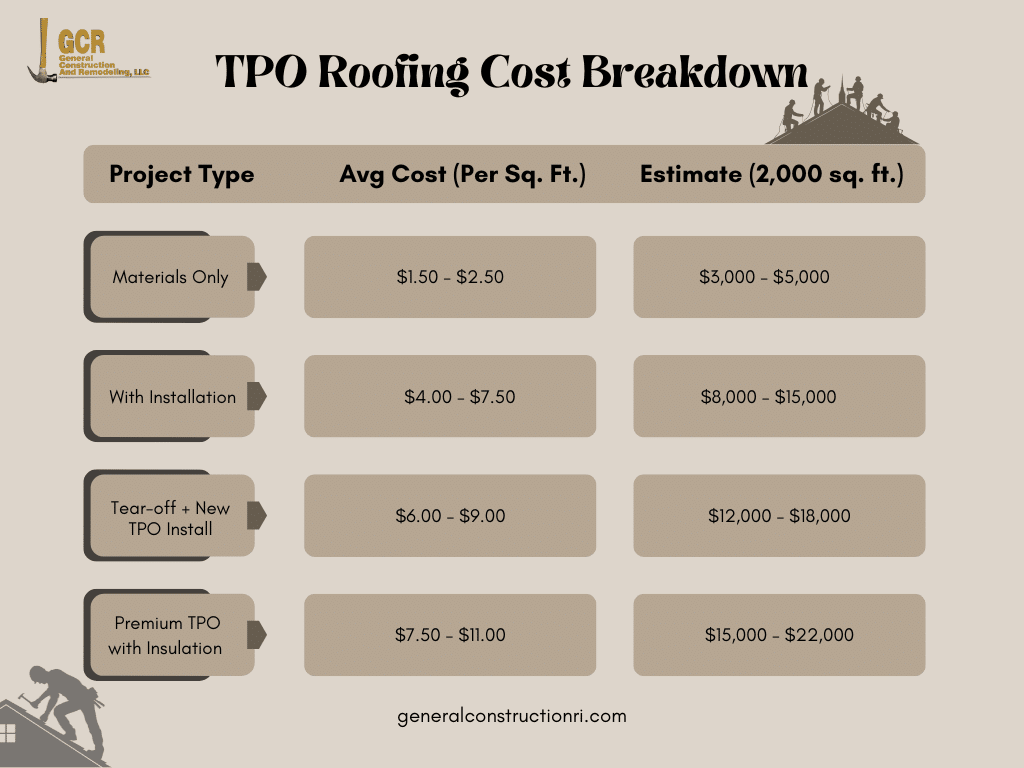
You can check details on costs from this link, or you can get a custom estimate from local roofing contractors who know the climate and materials best. Start with a free quote from General Construction RI.
Pros of TPO Roofing
Let’s dig into the pros and cons, starting with the positives and what good it brings to the table.
Energy Efficiency
TPO reflects sunlight, reducing heat absorption. The white TPO colors are great for cutting A/C bills in warmer months.
Long-Lasting Performance
I know no one likes to spend a fortune on home renovations. So, if you are thinking, how long does a TPO roof last? On average, around 20 to 30 years, depending on climate, installation, and care.
Environmentally Friendly
This is a very important point. TPO is recyclable and doesn’t contain chlorine, making it a greener roof type than some EPDM and TPO alternatives.
Easy to Install
Well, thanks to its lightweight structure and wide rolls, TPO roof installation is faster and more efficient compared to others like EPDM roofing.
Affordable
From materials to labor, TPO hits the sweet spot for people looking for budget-friendly yet durable solutions.
Cons of TPO Roofing
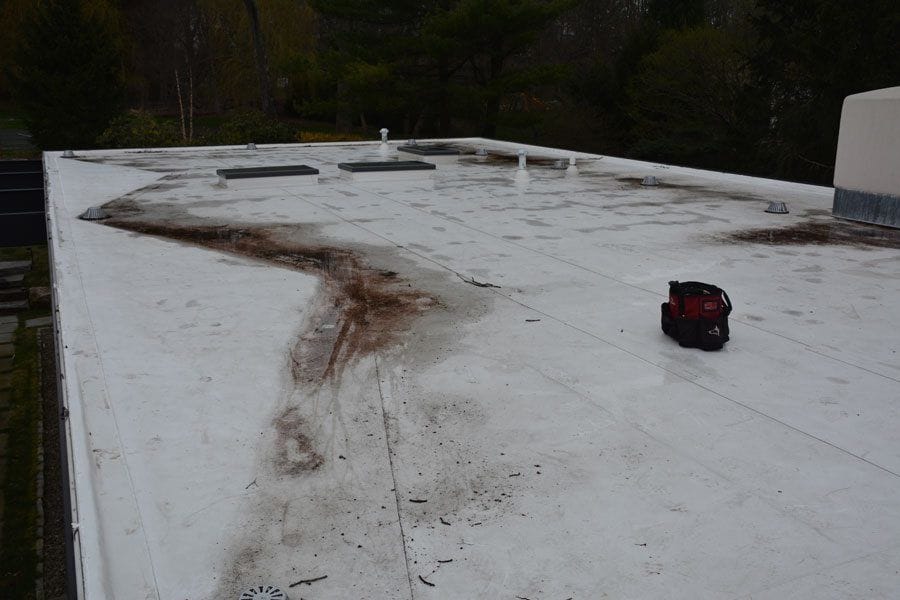
Credit:flatroofdoc.com
And let’s now discuss the pitfalls and TPO roofing problems that can arise if you’re not careful.
Varying Quality
Different brands produce different grades of TPO roofing. Cheap options may crack or fail early. Always work with trusted suppliers and pros.
Needs Professional Heat Welding
DIY installs can go wrong. TPO membrane seams must be heat-welded properly. If not done right, leaks or hail damage could follow.
Can’t Use Just Any Paint
Can you paint a TPO roof? Technically, yes, but you need the right type of paint. Regular paint won’t stick well and could void warranties.
Want to compare TPO roofing vs PVC roofing in detail? We’re happy to help walk you through both options.
How to Repair a TPO Roof
When it comes to fixing roof damage, TPO roofing makes life easier.
Common Issues
- Small holes or punctures: These can be heat-welded or patched with a matching TPO color.
- Seam separation: Re-sealed with hot-air welders.
- Pooling water: Usually means your slope needs correcting, not a membrane issue.
Need repair help? Don’t Google “TPO roofing near me” endlessly.
General Construction RI offers fast, expert-level repair for homes and commercial buildings alike.
Conclusion
So, what is a TPO roof really? It’s an efficient, affordable, and popular choice for flat roof systems, especially when installed by experienced pros.
It holds up against heat, hail, and wear. It’s flexible, and with the right team, it lasts long and performs great. It’s time to choose your ideal roofing type now.

